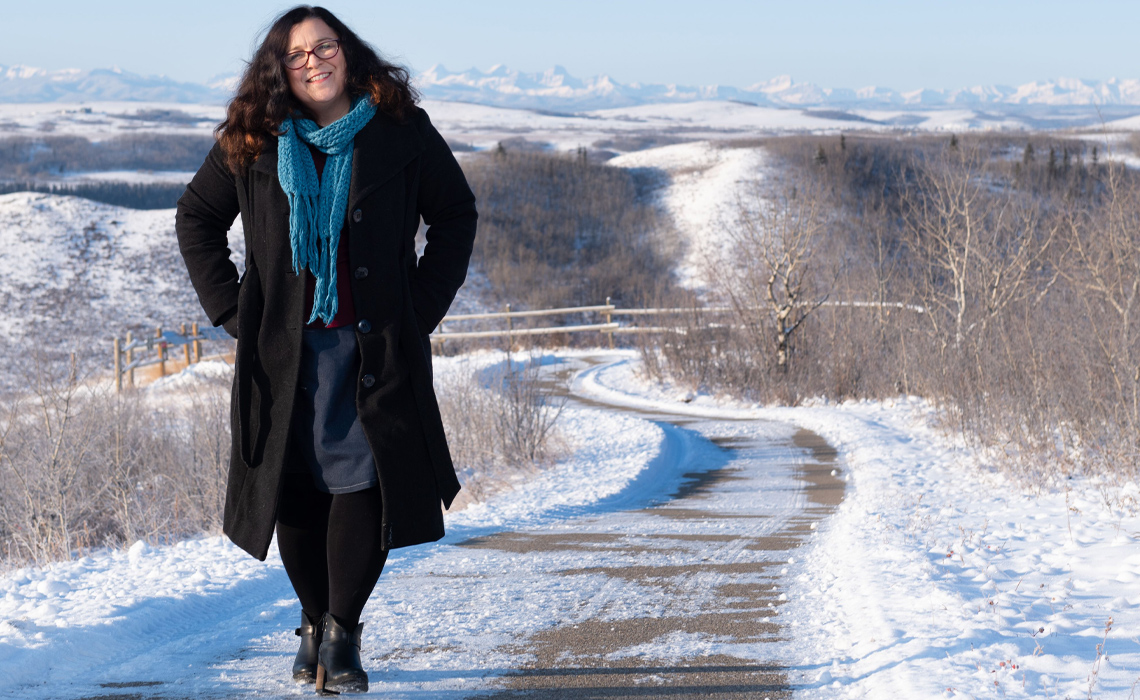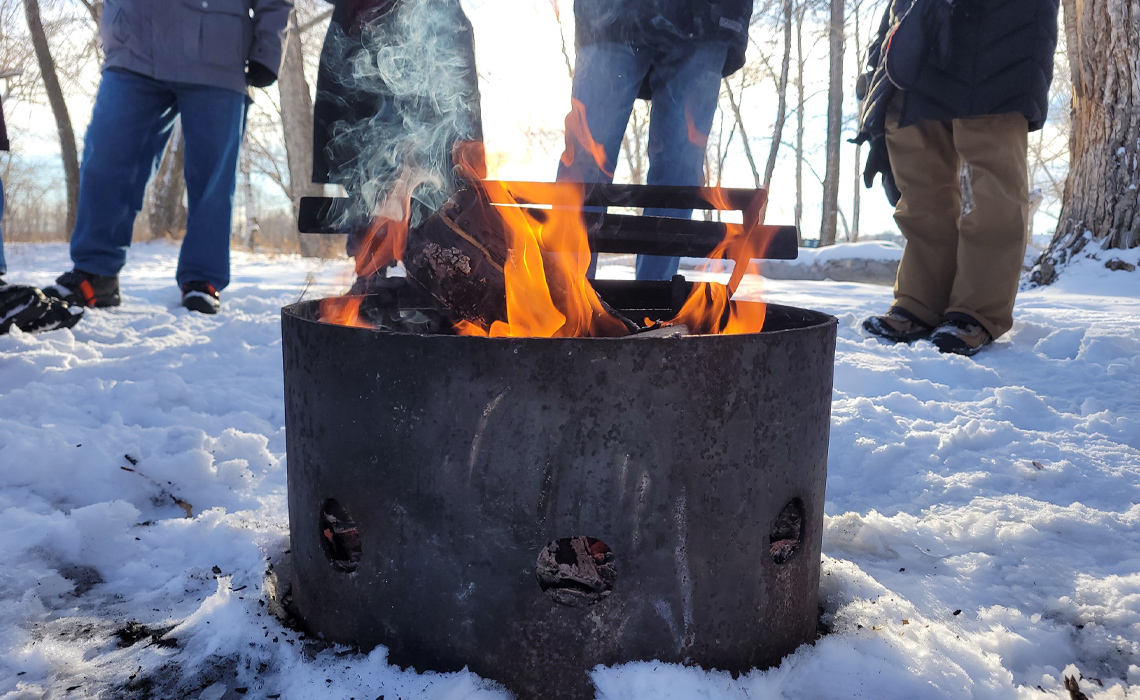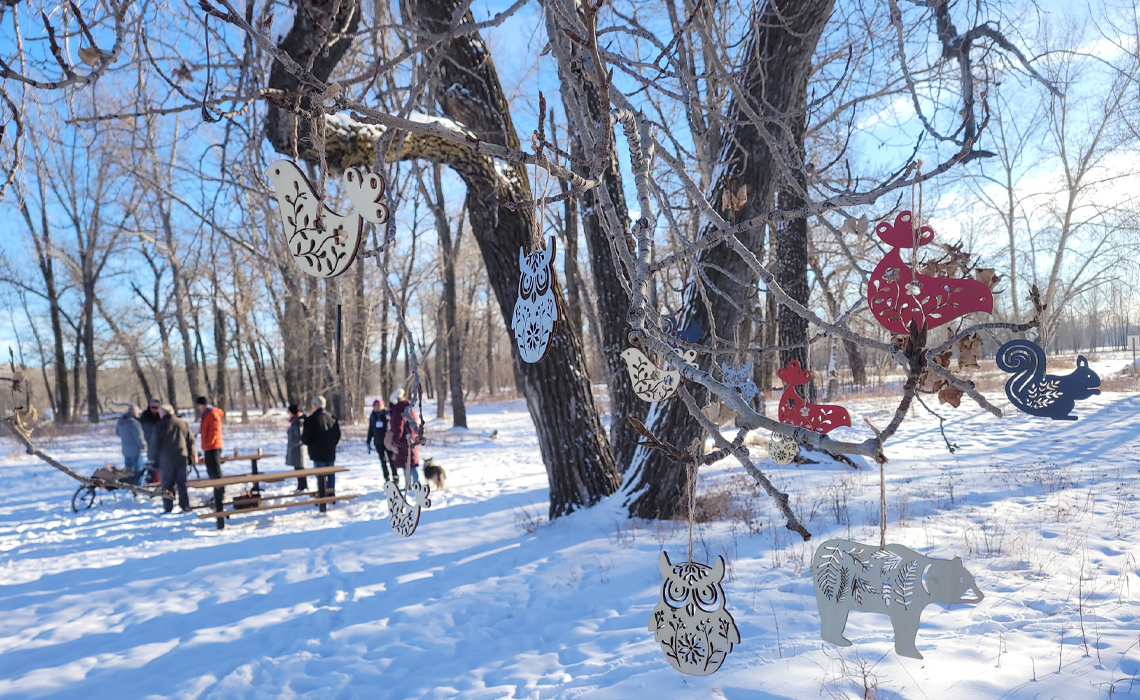Walking together

“This is a hopeful story about death, dying, and grief,” Dr. Sonya Jakubec, RN PhD, says.
If that sounds strange, it’s probably because as a society, we avoid those topics. Even though they’re something we all face.
Grief is a response to not only death, but a wide range of life experiences. The illness or loss of a person dear to us, our own illness, the end of a relationship, a job — even the state of the world.
“We don’t like to talk about death, grief or sad things,” Janet Arnold says. “But why the heck not?”
Arnold, a registered social worker, certified thanatologist (scholar of dying and death), and faculty member at MRU, teaches a death literacy course that prompts students to examine their perceptions surrounding grief and death. Her efforts with death education are part of a global death and grief literacy movement, a way of humanizing a normal stage of life.
This movement, which Jakubec says has been growing for the past fifteen years or so, coincides with an uptick in our understanding of how connection to nature benefits us.
“These two social movements are colliding in a really special way,” says Jakubec, a professor in MRU’s School of Nursing and Midwifery who is also a community mental health nurse. “It’s humanizing and normalizing this phase of life, and recognizing that we benefit from being in nature, and it’s happening across sectors.”
Reconnecting
Death and nature were once intrinsic parts of our lives. Death often happened at home — unlike now, when we keep it out of sight and in the hands of professionals. And where once we were closely connected to nature (and all its cycles), a recent study from the University of Derby suggests that connection has declined by 60% since 1800. In fact, it’s disappeared from our language as well as our physical environment.
Jakubec’s research, which looks at the effects of nature connectedness in palliative care, dementia and grief, is an example of the collision of movements. It brings together provincial agencies like Alberta Parks and Alberta Health Services, volunteer communities and study participants who share their experiences, and it has given rise to an enduring program — Good Grief — that has helped people come together in nature since 2017.

In 2015, Jakubec, an Alberta Parks volunteer and lifelong nature lover, co-authored a research study that explored what nature and park accessibility meant at end-of-life. Jakubec and her MRU colleagues, as well as Alberta Parks and Alberta Health Services, discovered that access to nature had positive positive effects for participants. “Across the board, we found that their mood and their depression improved, and it didn’t matter what kind of park they visited or for how long.”
That initial study gave rise to further research, including the role parks play in palliative and grief care. And as the research continued it sparked a broader conversation between Alberta Parks, community groups and Jakubec about how to help people reconnect with nature.
We all walk the same path
“Every time we presented to the community, especially volunteer organizations, people said ‘Sign me up, I want to do something,’ ” Jakubec says. “So this movement — walking with grief in parks and nature — began all around Alberta. It’s really a reconnection for people who are walking a similar path.”
“You see life and death and in between when you’re walking in nature, and there’s a sense of soothing as people are walking,” Arnold says. “You aren’t deliberately pointing things out, but you’re there and you’re surrounded by nature. The wind and the sun, and the birds and the insects — it all puts you in a place to be more open.”
We think of grief as a linear process, perhaps in part because of the “Five Stages of Death and Dying” introduced by American psychiatrist Elizabeth Kübler-Ross in 1969, but Jakubec points out the model was for people facing their own death. In reality, grief can be messy and as unique as the person experiencing it.
Jakubec believes one of the reasons the grief walks have been so successful is their informality. “It’s a social world we’re in, and these are social experiences we’re having.”
Arnold agrees. In the early days of the program, she was asked to join a group as an advisor, but found the participants were connecting and supporting each other on their own. “They didn’t need me the way they thought they would,” she says. “It was lovely.”

Rose Ratliffe, volunteer lead for Good Grief, came to the program through the Friends of Fish Creek Provincial Park Society (affectionately called “the Friends”) in 2017. When first approached by program leaders at the Friends to volunteer, Ratliffe was hesitant — she had mostly devoted her time to “hands-on, digging in the dirt” for the Friends. But the program leaders persisted. Ratliffe’s initial participation coincided with losses in her own family, and she found the experience resonated with her in many ways. “We’re all grieving or carrying something, whether we acknowledge it or not,” she says.
The group follows four walking routes over eight weeks, and each walk explores a different theme (for example, “gratitude”). The final walk usually focuses on “ritual,” and the group gathers around a fire to close out their session.
At its heart, the program is simple. “We get a group of people together who are walking a similar path, and we go for a walk in the woods or in the park. And we connect,” Ratliffe says.
As Good Grief has grown, Ratliffe and her team have developed a training guide of sorts. It draws on her wealth of knowledge about the nature in the park, as well as what volunteers have learned from leading walks over the years. Volunteers come from a variety of backgrounds, including nature therapy and grief therapy, but many simply bring their life experiences.
The program has evolved to include other organizations and communities — including Crimson Lake, Dinosaur Provincial Park, St. Albert and Bow Valley Provincial Park — and moved beyond provincial borders to B.C. and Ontario. Jakubec has even heard from people as far away as Japan.
Meeting community-based needs is core to Alberta Parks’ ongoing goals, making grief walks a natural fit. “Grief walks help make parks more welcoming and accessible to people when they need nature most,” says Jennell Rempel, senior parks planner at Alberta Parks. “A park or a favourite trail can take on an entirely new meaning after loss; perhaps it will help you to work through complex feelings, reconnect with cherished memories, or create new ones.”
Hard work, but worth it
Access to nature can be transformative for patients in palliative or long-term care who may not have easy access to the outdoors. Jakubec’s research and community work includes these groups, too. Like the walkers in Fish Creek Park, these people and their caregivers are also dealing with loss.
“This kind of research highlights what’s important in connecting people and parks in palliative and grief care. It’s often hard work, but it’s always worth it,” Jakubec says.
And as with the grief walks, people power makes these experiences possible. People work together across sectors and disciplines to do the “hard work” that lets someone spend the afternoon outside, or makes sure natural spaces are accessible to everyone.
Jakubec often ends up working with these groups — for example, she was part of the broad community consultation alongside the Calgary Parks Foundation (and MRU alumnus/former employee Lindsay Paul) for a dementia-inclusive park, which will be completed in fall 2026, and with the Riverside Bridgeland Community Association, CareWest and (formerly) Alberta Health Services to study the experiences of a pop-up park for long-term care residents and community members.
“Each time I speak at events or conferences or with community groups, new spin-offs happen because it’s only natural, and it’s something people can get behind,” Jakubec says.
Working across sectors has been enlightening for everyone. “Jennell and I attend each other’s events and developed a walking workshop approach we call ‘walkshops’. At first people are surprised by the combination of palliative care, grief and parks, but after they hear us talk about this they’re excited.”
Rempel agrees. “The more time we spend in cross-disciplinary settings, the more each sector benefits from the broader views. And parks are all about beautiful views."

